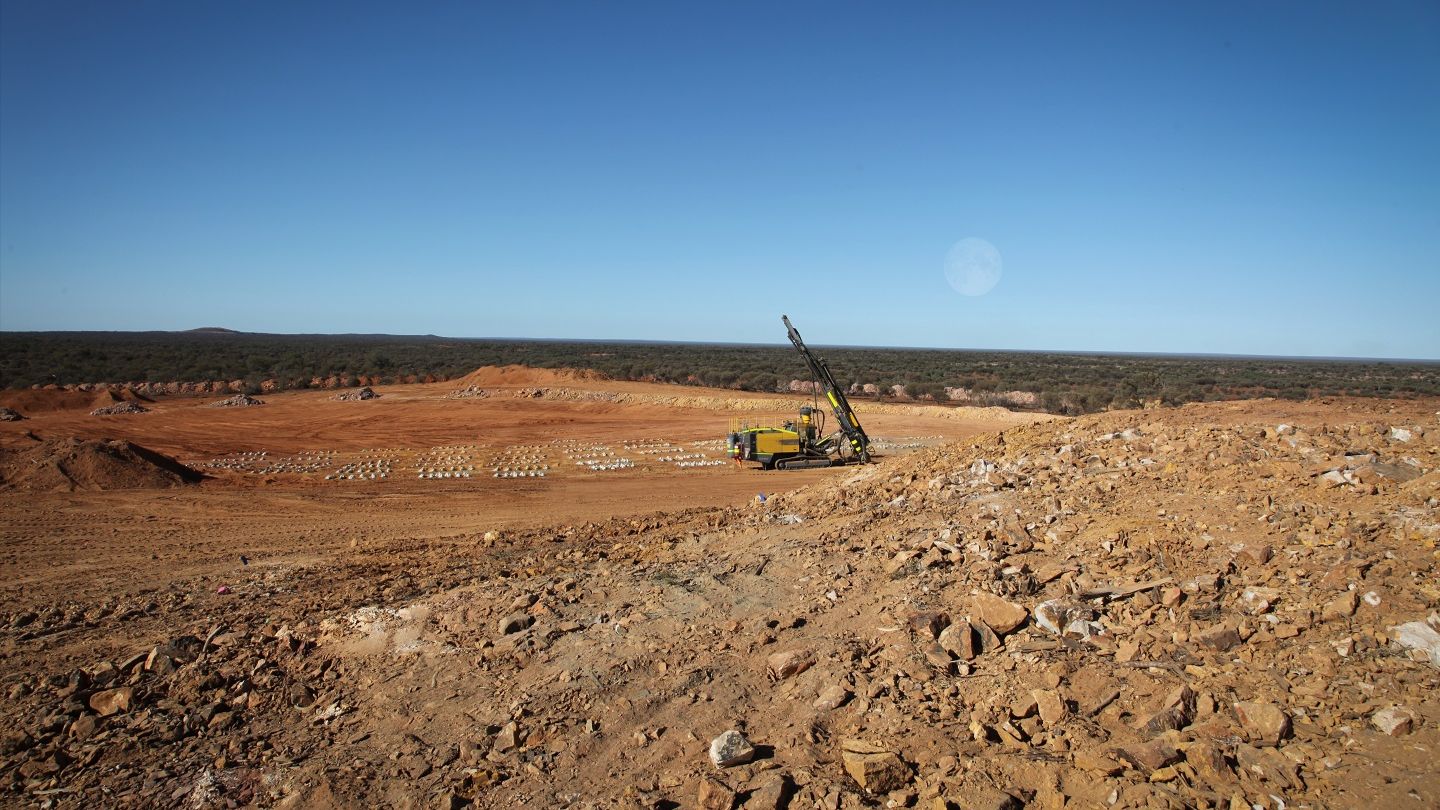As per Midland, the Mythril area and Galinée projects are highly anomalous for lithium-beryllium-tantalum.

Rio Tinto signed an option agreement to acquire stake in the properties, this June.
Credit: Juan Enrique del Barrio/Shutterstock.com
Canadian mining company Midland Exploration has begun its first exploration for lithium at its Mythril area and Galinée projects, located in the Canadian province of Quebec.
Mythril Regional, including Chisaayuu, Corvette and Mythril East, along with the Galinée projects, are located in Baie-James and in Eeyou Istchee municipalities in Quebec, respectively.
The Eeyou Istchee region in the province is presently seeing exploration rush for lithium pegmatites.
The Mythril regional projects feature 730 claims, spread across 370.1km², while the Galinée project has 54 claims across 27.7km².
In June, Rio Tinto signed an option deal with Midland to acquire up to 50% interest across Mythril-Corvette, Mythril-East, Mythril-Chisaayuu, Galinee, Moria, Shire, Komo, Warp, Sulu, and Picard properties.
These properties contain a total of 2009 claims. which are spread across on more than 1,000km².
The exploration programme being conducted by Midland includes high resolution light detection and ranging (LiDAR) survey. At Chisaayuu and Corvette projects, lithium lake bottom anomalies were found following statistical treatment.
The Mythril Regional projects are claimed to contain amphibolite rock formations which are known to host rocks bearing lithium pegmatites. A historical work by the company shows evidence of lithium-beryllium-tantalum (Li-Be-Ta) pegmatite potential.
An exploration for copper, at Chisaayuu last year, returned strong anomalous lithium values with 0.12% and 0.04% of lithium oxide (Li2O).
A grab sample of pegmatitic boulder at Corvette project returned highly anomalous Li-Ta values 0.02% Li2O and 72ppm of Ta. Lake bottom lithium anomalies have also been found at the Chisaayuu and Corvette projects.
Midland further stated that none of these anomalies followed up yet and will be targeted during this exploration programme.
Solstice purchases two lithium projects in Ontario, Canada
The two projects are located near Nipigon, Ontario, and host lithium-caesium-tantalum (LCT) pegmatites.
Canadian mining company Midland Exploration has begun its first exploration for lithium at its Mythril area and Galinée projects, located in the Canadian province of Quebec.
Mythril Regional, including Chisaayuu, Corvette and Mythril East, along with the Galinée projects, are located in Baie-James and in Eeyou Istchee municipalities in Quebec, respectively.
The Eeyou Istchee region in the province is presently seeing exploration rush for lithium pegmatites.
The Mythril regional projects feature 730 claims, spread across 370.1km², while the Galinée project has 54 claims across 27.7km².
In June, Rio Tinto signed an option deal with Midland to acquire up to 50% interest across Mythril-Corvette, Mythril-East, Mythril-Chisaayuu, Galinee, Moria, Shire, Komo, Warp, Sulu, and Picard properties.
These properties contain a total of 2009 claims. which are spread across on more than 1,000km².
The exploration programme being conducted by Midland includes high resolution light detection and ranging (LiDAR) survey. At Chisaayuu and Corvette projects, lithium lake bottom anomalies were found following statistical treatment.
The Mythril Regional projects are claimed to contain amphibolite rock formations which are known to host rocks bearing lithium pegmatites. A historical work by the company shows evidence of lithium-beryllium-tantalum (Li-Be-Ta) pegmatite potential.
An exploration for copper, at Chisaayuu last year, returned strong anomalous lithium values with 0.12% and 0.04% of lithium oxide (Li2O).
A grab sample of pegmatitic boulder at Corvette project returned highly anomalous Li-Ta values 0.02% Li2O and 72ppm of Ta. Lake bottom lithium anomalies have also been found at the Chisaayuu and Corvette projects.
Midland further stated that none of these anomalies followed up yet and will be targeted during this exploration programme.
Solstice purchases two lithium projects in Ontario, Canada
The two projects are located near Nipigon, Ontario, and host lithium-caesium-tantalum (LCT) pegmatites.

The two new lithium projects cover a total of 96km² with 275 claims.
Credit: A R Turner/Shutterstock.com.
Canadian gold exploration company Solstice Gold has acquired the Church Lake project and has the option to acquire a 100% interest in the Purdom project, located near the Frazer Lake area in Nipigon, Ontario.
Solstice reached an agreement with 1544230 Ontario and Gravel Ridge Resources (“optioners”) to buy the option to acquire the optioners’ stake in the Purdom project.
It has agreed to pay C$21,000 ($15,488) in cash within ten days and issue 300,000 shares to the optioners.
To exercise the option, the company must conduct exploration expenditure on the claims and make payments, including C$25,000 by the first anniversary of the option agreement followed by a payment of C$30,000 by the second anniversary and a payment of C$34,000 by the third anniversary.
It must also pay at least C$30,000 for exploration work within the first anniversary.
The optioners will retain a 1.5% net smelter royalty (NSR) on the project, including a 0.75% buyback for C$900,000.
With these acquisitions, Solstice added 96km² of strategic land for lithium pegmatite exploration. The Church Lake project covers 55km² of area with 261 claims and the Purdom project spans 41km²with 14 claims.
The Church Lake project is 5km south of Pegmatite One Lithium’s (PGA) claims, which host a new lithium-caesium-tantalum (LCT) pegmatite discovery.
It is within the halo of two-mica granite mapped by the Ontario Geological Survey (OGS), which is expected to be the source of the LCT pegmatites in the region. OGS’s survey also suggests that the pegmatites are closer to the intrusive.
The project is within the southern end of a fault with several lithium lake sediment anomalies. There are prominent east-west structures across the area’s length.
The Purdom project is located east of PGA’s claims and 3.5km to OGS-mapped two-mica granite. It is claimed to host lithium lake sediment anomalies.
Lake sediment anomalies at the two projects are newly documented and provide positive indications of potential for pegmatite discoveries, Solstice added.
Solstice CEO Pablo McDonald said: “A possible western extension of the Georgia Lake Deposit in this area was identified as part of Solstice’s 2023 Province-wide review of potential lithium areas. We had been tracking progress in the area and decided to seize the opportunity to stake once we saw positive results to confirm its potential.
“We are very happy with the preliminary results we’ve seen from our reconnaissance field trip, and we have already mobilised field teams to the area. We will be making use of structural and geochemical data to vector into the areas of the highest potential in this area while doing systematic coverage of the properties.”
Canadian gold exploration company Solstice Gold has acquired the Church Lake project and has the option to acquire a 100% interest in the Purdom project, located near the Frazer Lake area in Nipigon, Ontario.
Solstice reached an agreement with 1544230 Ontario and Gravel Ridge Resources (“optioners”) to buy the option to acquire the optioners’ stake in the Purdom project.
It has agreed to pay C$21,000 ($15,488) in cash within ten days and issue 300,000 shares to the optioners.
To exercise the option, the company must conduct exploration expenditure on the claims and make payments, including C$25,000 by the first anniversary of the option agreement followed by a payment of C$30,000 by the second anniversary and a payment of C$34,000 by the third anniversary.
It must also pay at least C$30,000 for exploration work within the first anniversary.
The optioners will retain a 1.5% net smelter royalty (NSR) on the project, including a 0.75% buyback for C$900,000.
With these acquisitions, Solstice added 96km² of strategic land for lithium pegmatite exploration. The Church Lake project covers 55km² of area with 261 claims and the Purdom project spans 41km²with 14 claims.
The Church Lake project is 5km south of Pegmatite One Lithium’s (PGA) claims, which host a new lithium-caesium-tantalum (LCT) pegmatite discovery.
It is within the halo of two-mica granite mapped by the Ontario Geological Survey (OGS), which is expected to be the source of the LCT pegmatites in the region. OGS’s survey also suggests that the pegmatites are closer to the intrusive.
The project is within the southern end of a fault with several lithium lake sediment anomalies. There are prominent east-west structures across the area’s length.
The Purdom project is located east of PGA’s claims and 3.5km to OGS-mapped two-mica granite. It is claimed to host lithium lake sediment anomalies.
Lake sediment anomalies at the two projects are newly documented and provide positive indications of potential for pegmatite discoveries, Solstice added.
Solstice CEO Pablo McDonald said: “A possible western extension of the Georgia Lake Deposit in this area was identified as part of Solstice’s 2023 Province-wide review of potential lithium areas. We had been tracking progress in the area and decided to seize the opportunity to stake once we saw positive results to confirm its potential.
“We are very happy with the preliminary results we’ve seen from our reconnaissance field trip, and we have already mobilised field teams to the area. We will be making use of structural and geochemical data to vector into the areas of the highest potential in this area while doing systematic coverage of the properties.”
No comments:
Post a Comment